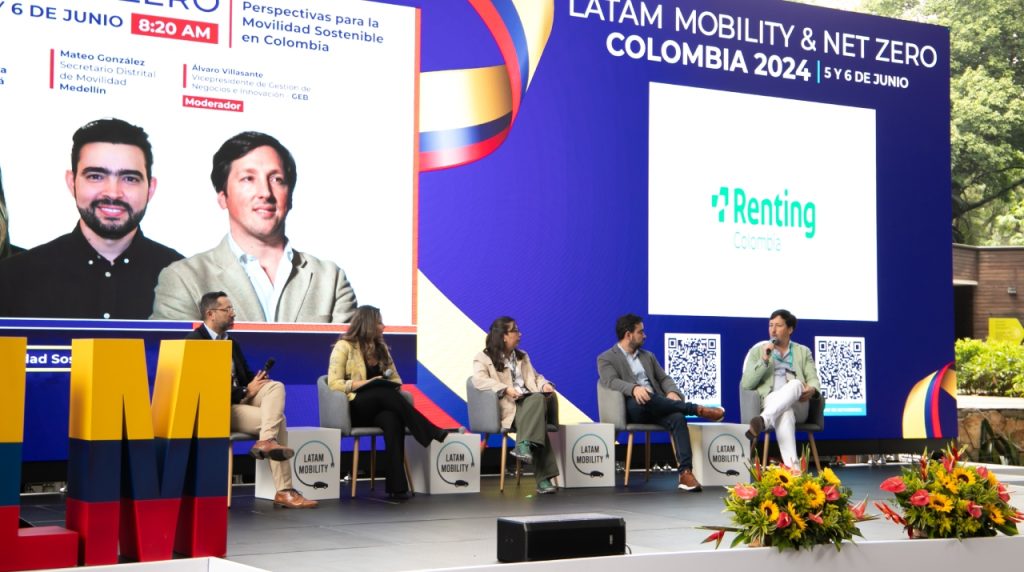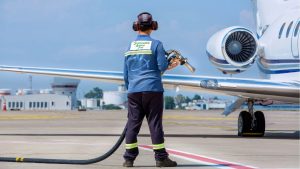The “Latam Mobility & Net Zero Colombia 2024” in Medellín brings together the most important companies and leaders in energy, transportation, fuels, and mobility to showcase the advancements and perspectives of the industry in the country and the region.
In this context, one of the topics discussed was “Perspective on Sustainable Mobility in Colombia,” led by Alvaro Villasante, Vice President of Business Management and Innovation at Grupo Energía Bogotá, who guided the conversation from start to finish.
Along with him were Sandra Sandoval, advisor to the government of the Department of Meta, Jaime Andrés Beltrán, mayor of Bucaramanga, Paula Palacio, director of the Metropolitan Area of the Aburrá Valley and Mateo González, district secretary of mobility in Medellín.
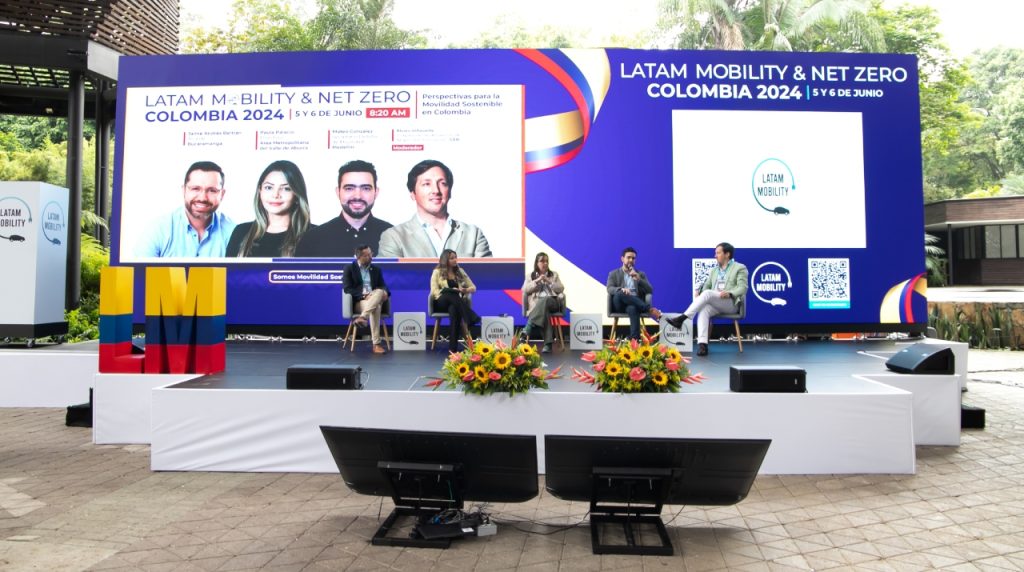
Challenges and Realities in Territorial Governance
Jaime Andrés Beltrán, Mayor of Bucaramanga, highlighted the complexities and challenges faced by local leaders in Colombia. Although the global discourse centers on grand aspirations, realities on the ground are much more modest and complicated.
Mayors must balance what they wish to achieve with the limited resources available. This dilemma necessitates attending events and forums where they can obtain strategies and mechanisms to address mobility, urban development, and the environment.
Beltrán emphasized the mass transportation crisis in Bucaramanga as a clear example of urban problems requiring urgent attention. He noted that the collapse of these systems has increased the use of motorcycles and cars, exacerbating chaos in the streets.

The city has seen a dramatic increase in the number of motorcycles, from 120,000 to 900,000, evidencing the inefficiency of public transport. Funding is another major challenge highlighted by Beltrán. He compared the creation of development plans to grocery shopping, where desires often surpass the ability to pay.
Limited funds force mayors to prioritize certain projects over others, often relegating environmental issues to the background. Governance in these contexts becomes an act of balancing, where immediate demands such as security and social well-being take precedence. The decentralization of problems without a corresponding decentralization of resources worsens this situation, preventing municipalities from adequately investing in their needs.
Beltrán suggests that the solution lies in collaboration between the national and local governments. The vision for a mass and multimodal transportation system for Bucaramanga includes implementing cable cars, converting buses to more sustainable systems, and integrating bicycles and pedestrians.
However, for these ideas to materialize, it is crucial to have financial and strategic support from the national government. Despite existing designs and plans, execution requires significant resources and concerted political decisions that transcend the capacities of individual municipalities.
Role of the Aburrá Valley Metropolitan Area in Urban Transformation
The Aburrá Valley Metropolitan Area, under the direction of Paula Palacio, has been a notable example of inter-municipal collaboration and strategic planning in Colombia. This entity, which associates 10 cities, with Medellín as the core city, was formed 10 years ago to address the challenges of conurbation in the region.
Based on fundamental values such as trust and solidarity, this association has allowed Medellín, despite being the recipient of various urban problems, to leverage its wide-ranging possibilities to close gaps and improve the quality of life in the municipalities that make up the Aburrá Valley.
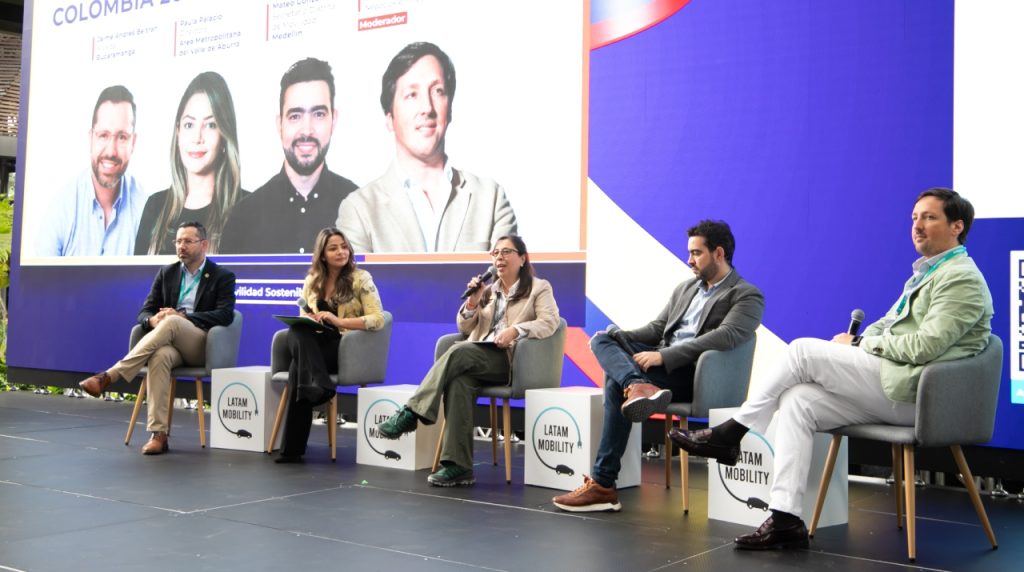
This narrow, densely populated valley has forced authorities to rethink urban planning and land-use policies. The Metropolitan Area has coordinated these policies as the transportation and environmental authority, enabling the development of comprehensive plans aimed at improving citizens’ quality of life through a long-term vision.
In terms of sustainable mobility, the region has adopted a series of physical and regulatory measures. An example is the public bicycle system, which aims for 10% of trips in the Aburrá Valley to be made by bicycle by 2030.
This ambitious project faces significant challenges in terms of financing but reflects the Metropolitan Area’s commitment to environmental, economic, and social sustainability. The entity constantly seeks new funding modalities and ways to strengthen the sustainable transport system.
Besides bicycle mobility, another key project is the “Train of the River,” which seeks to connect the Aburrá Valley with the Antioquia region and the rest of the country. In collaboration with the Antioquia Railway Promoter, the governor’s office, Medellín Metro, and the Medellín district, it represents a significant effort to improve social dynamics and air quality in the region.
Mobility in Medellín
Mateo González, District Secretary of Mobility in Medellín, welcomed Latam Mobility to the city, which has adopted electric mobility as one of its main priorities, a vision supported by the mayor and the director of the Metropolitan Area.
Medellín’s geography, a valley surrounded by mountains, makes decarbonizing mobility a priority. During dry seasons, air quality is significantly affected by pollution, mainly from mobile sources, highlighting the need to reduce emissions to improve both the environment and public health.
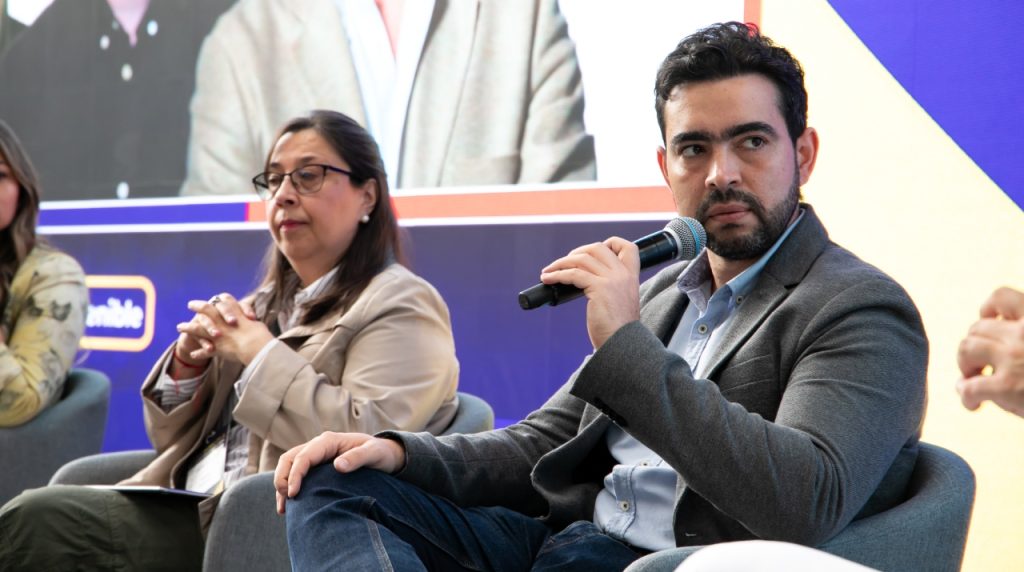
Air pollution in Medellín is not only an environmental concern but also a serious public health issue. Vehicle emissions are the main cause of respiratory diseases and a decline in the quality of life for inhabitants. In response, the “Medellín Loves You 2024-2027” development plan includes specific strategies to promote electric and sustainable mobility. This effort is carried out in collaboration with the private sector and the Metropolitan Area, identifying gaps and opportunities to make electric mobility a tangible reality in the city.
To encourage the adoption of electric vehicles, exemptions from traffic restrictions and reduced registration costs compared to gasoline vehicles have been implemented.
Additionally, the development plan establishes a special transport fund with various funding sources aimed at improving public transport technologies. The goal is not only to modernize private mobility but also to ensure that public transport is updated with clean technologies, ideally electric.
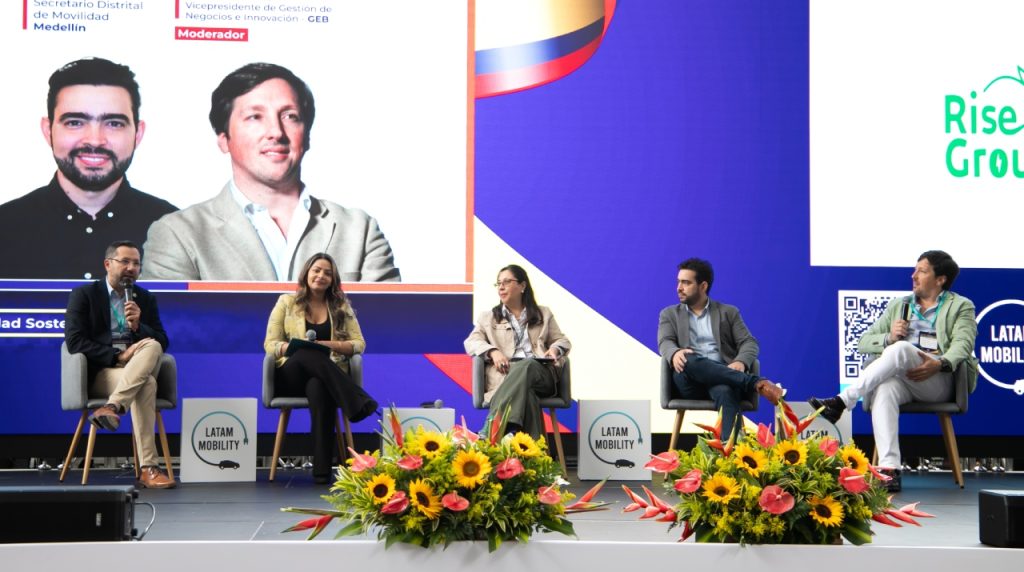
One current challenge is the growing preference for motorcycles, which, although perceived as less polluting, generate significant emissions when used in large quantities. To counter this trend, there are plans to improve and modernize public transport, encouraging the use of clean technologies.
The local administration is committed to this transformation, allocating funds and efforts to make public transport a more attractive and sustainable option for citizens.
Finally, the modernization plan includes the purchase of 13 new trains to strengthen the metro line, increasing train frequency and improving service for users. Additionally, the Metroplus buses, currently operating on natural gas, are projected to be upgraded to electric by 2026.
Towards Sustainable Mobility in Meta
Governor Rafaela Cortés could not attend the event, and Sandra Sandoval, advisor to the governor, presented the perspective from a territory often left out of dominant conversations about urbanization and transportation.
From the outset, it was emphasized that the discussion frequently focuses on large cities, overlooking the particularities and needs of less urbanized regions like Meta. This department, an integral part of the Orinoquía, covers a third of Colombia’s continental territory and hosts a vast diversity of ecosystems and a predominantly rural population.
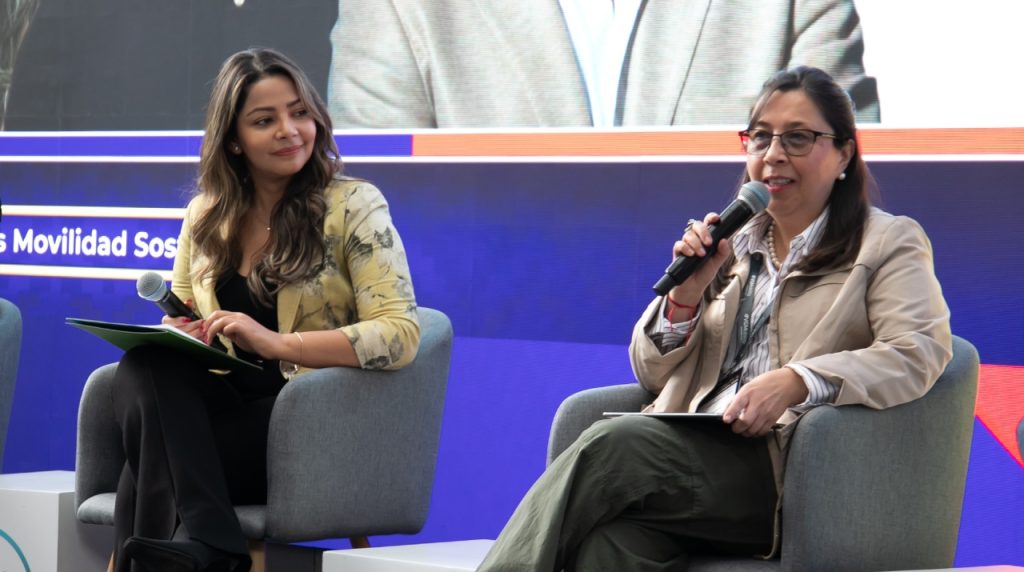
Meta, with only 4 million inhabitants distributed over an extensive area, faces unique challenges in terms of mobility. Villavicencio, its most populated city with 500,000 inhabitants, lacks an efficient mass public transport system.
The representative highlighted the urgent need to implement sustainable transportation, learning from successful models like TransMilenio in Bogotá. Mobility infrastructure must be a decisive factor in land-use planning to avoid the high costs of providing services to unplanned settlements and to promote more inclusive and organized development.
With 29 scattered municipalities, investment in road infrastructure is crucial. Thanks to oil royalties, Meta has prioritized this sector in its development plan. Additionally, sustainable alternatives such as photovoltaic energy are being explored to promote ecotourism and electric mobility.
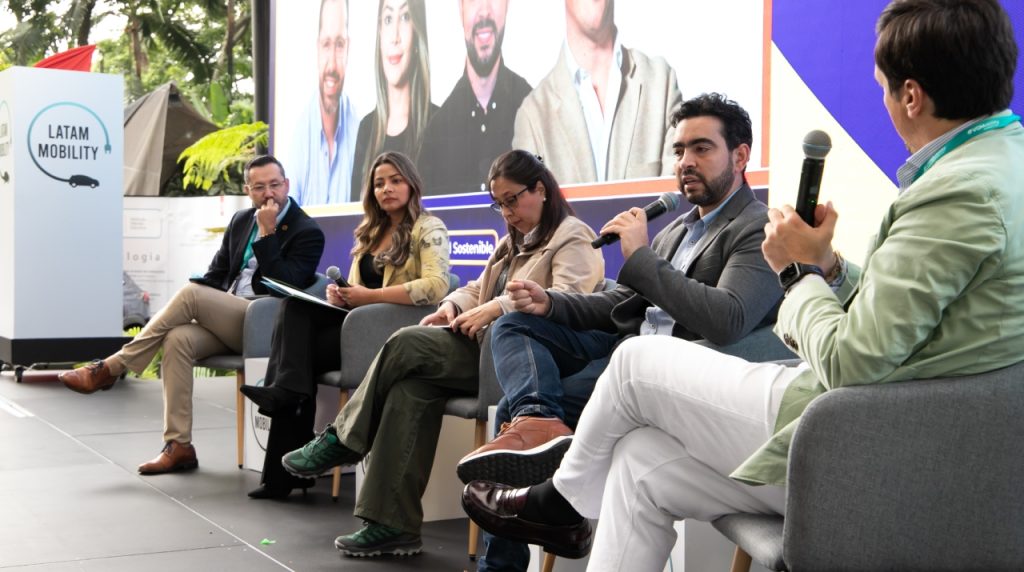
Meta’s potential also extends to the navigability of the Meta River, an initiative aimed at revitalizing historical river routes to facilitate the transportation of goods and people. This measure could be essential for leveraging the region’s vast agricultural lands and efficiently connecting them with the rest of the country.
Furthermore, the proposal for an international airport in Villavicencio is a strategic step to better integrate the Orinoquía with the global market, providing crucial air mobility infrastructure for a region covering half of Colombia’s territory. Finally, the representative highlighted the exploration of rail connectivity, particularly between Puerto Gaitán and Villavicencio, based on previous studies that could transform cargo and passenger transport in the region, connecting Meta with Vichada and facilitating an efficient flow of resources.




